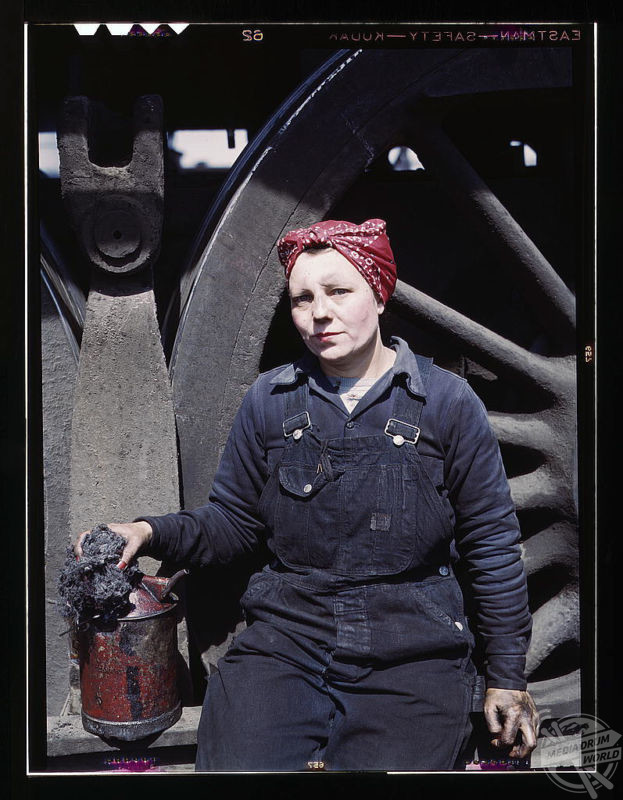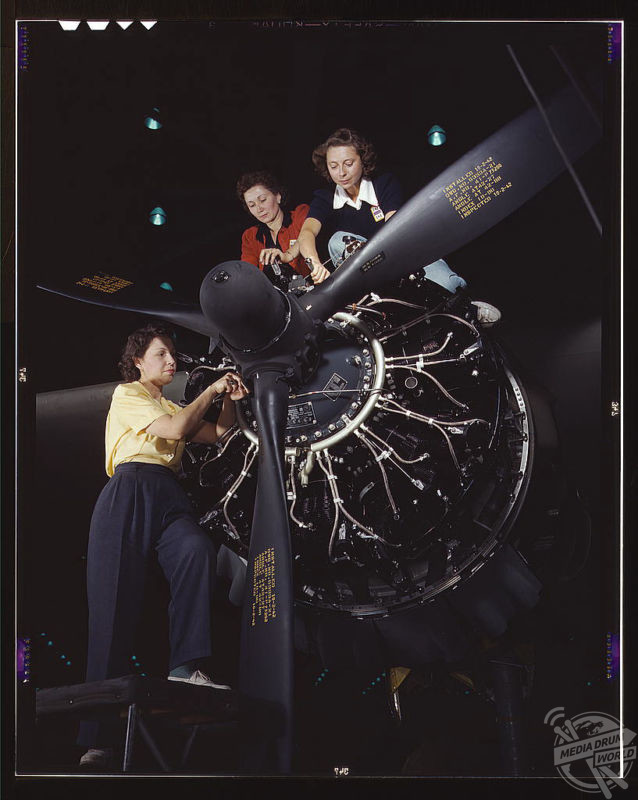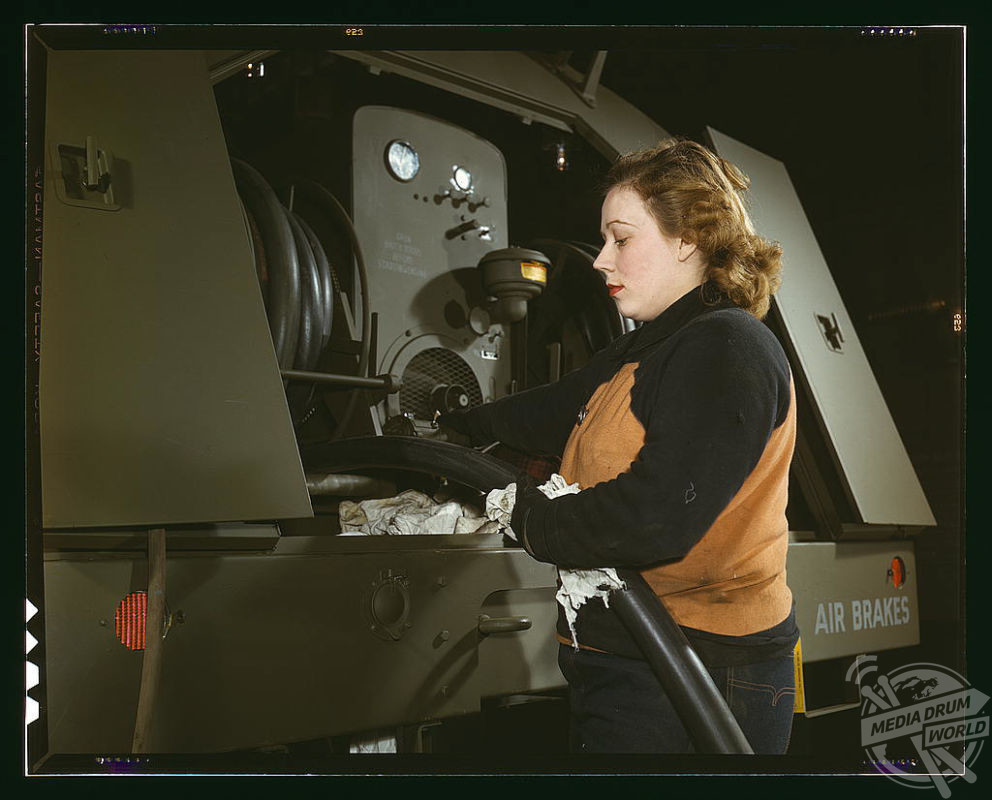
By Alex Jones
FASCINATING colour photos from 1942-43 show how invaluable women were to the United States’ war effort – with millions of women tasked with building military machines.

Remarkable shots, many of them never published before, show industrious women employed as sootified railway engine workers; adding the crucial final details to an airplane motor, and crafting components for the USA’s state-of-the-art weaponry.

As the United States sent millions of men to war, the country’s mills, factories and workshop needed replacement workers. Women, who traditionally had only been employed in ‘gender suitable’ roles such as admin or waitressing, or were expected to stay at home to tend to the household, were asked to step up to fill their husband, brother, or father’s work boots. In order to recruit women for factory jobs, the US government created a propaganda campaign centred on a figure known as Rosie the Riveter. Renowned as ‘tough yet feminine’ whilst wearing navy overalls and sporting a red bandana, Rosie’s iconic image inspired a generation of women not only in America, but across the world.

World War II changed both the type of work women did and the volume at which they did it. Five million American women entered the workforce between 1940-1945. In particular, World War II led many women to take jobs in defence plants and factories around the country. These jobs provided unprecedented opportunities to move into occupations previously thought of as exclusive to men, especially the aircraft industry, where a majority of workers were women by 1943.

Despite doing the same jobs as their male counterparts, women rarely received the same level of financial compensation. However, their work undoubtedly boosted the United States’ war effort and acted as a foundation for the equal rights battle which dominated the latter half of the 20th Century.
The stunning snaps were taken in 1943 by photographer Alfred T. Palmer who is best known for his photographs depicting America during World War II, as he became an Office of War Information photographer from 1942 until 1943.






